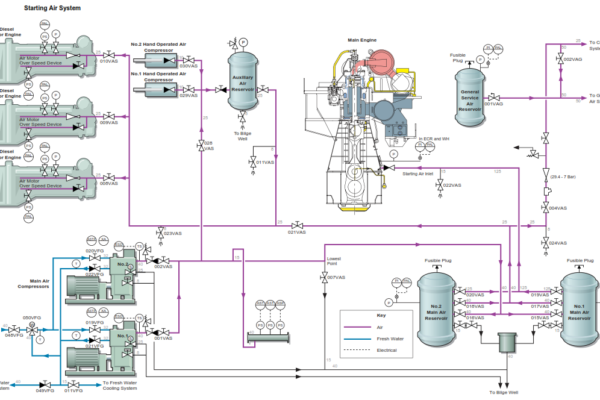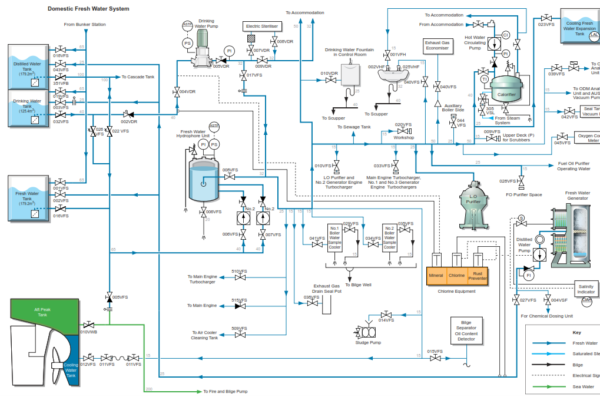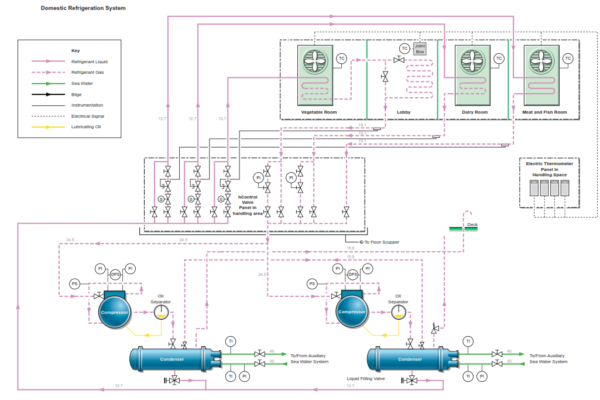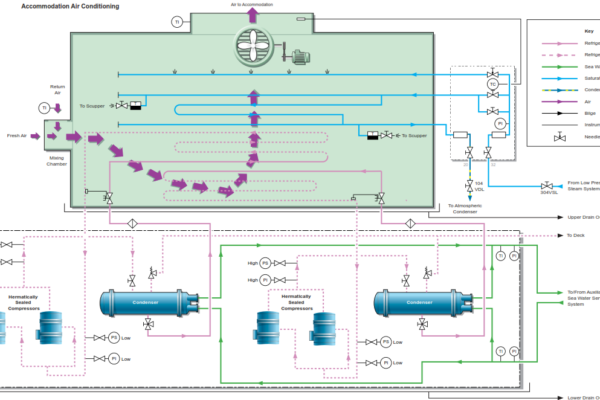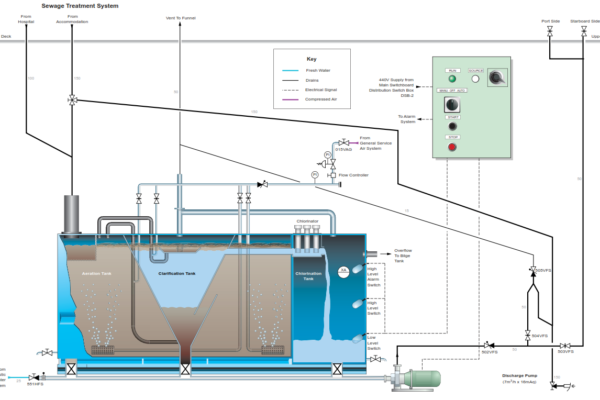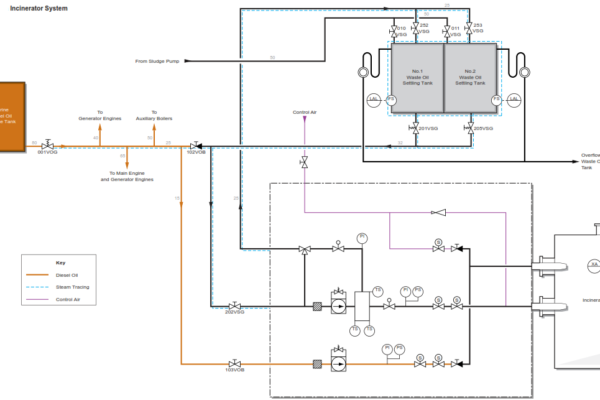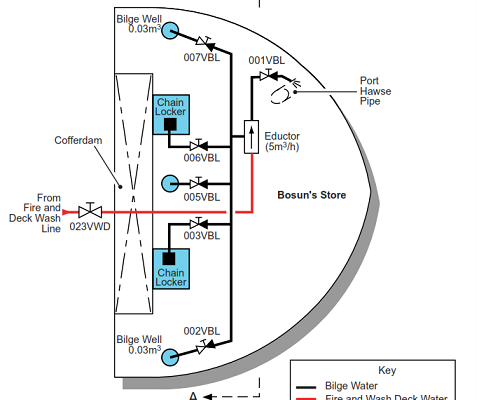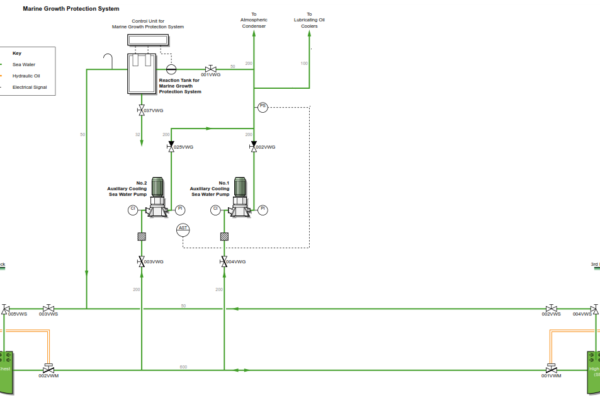STARTING AIR SYSTEM
The starting air system is supplied by two main starting air compressors that supply two 5.0m3 starting air receivers. The compressors are of the two stage reciprocating type and are cooled by fresh water from the fresh water cooling system. A three-way temperature controlled valve
